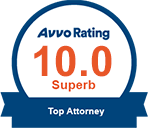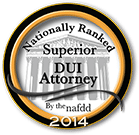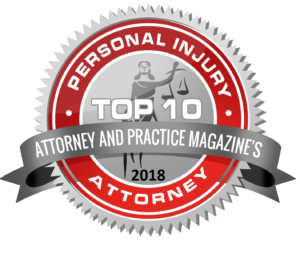When a car accident happens, the impact can be more than just physical. It may leave you with injuries that need treatment, medical bills that start to pile up, and time lost from work as you recover. Virginia law allows people who are hurt in car accidents to seek compensation if the accident was caused by someone else’s negligence. This is done through a personal injury lawsuit. Filing a lawsuit may feel complex, but it is a step-by-step process that can help ensure you are fairly compensated for your injuries and other losses. Understanding how this process works will help you feel more confident as you start your case. At, NovaLegalGroup, P.C., we are here to guide you through the legal process and help you navigate the complexities of your case

Understanding Virginia’s Personal Injury Laws
In Virginia, personal injury laws are designed to protect people who are injured because of another person’s careless or reckless actions. These laws let people file a claim to recover the costs they have paid because of the accident. Virginia follows what is called “contributory negligence.” This rule means that if you are found even slightly responsible for the accident, you cannot recover any compensation from the other party. It is important to be aware of this because it places a high burden on proving that the other party is entirely at fault. To meet this burden, your case must show that the other driver’s actions directly caused your injuries.
Another important law to know is Virginia’s statute of limitations for personal injury cases. This law sets a strict deadline of two years from the date of the accident to file your lawsuit. If you do not file within this time frame, your case may not be heard, and you could lose the chance to recover compensation. Because of these strict rules, it is wise to start the process as soon as possible.
Gathering Evidence for Your Personal Injury Case
A personal injury case depends heavily on the evidence you gather, and starting this process right away can make a significant difference. As soon as the accident occurs, it is a good idea to document everything. This may include taking photos of the accident scene, capturing the damage to the vehicles, and showing any visible injuries you have. Photographic evidence can be crucial, as it paints a clear picture of what happened.
In addition to photos, medical records will also be an important part of your case. These records show the extent of your injuries, the treatments you received, and how the injuries have impacted your daily life. It is essential to follow all medical advice and attend all appointments because missing appointments or ignoring treatment plans could harm your case. Keeping all records organized, including bills and doctor’s notes, can strengthen your position when presenting your case.
Witnesses can also play a role in supporting your claims. If anyone saw the accident, their testimony could provide an unbiased perspective on what occurred. Collecting contact information from any witnesses at the scene can be helpful, as their statements may support your claim later on.
Starting the Lawsuit by Filing the Complaint
The next step in the process is formally starting your lawsuit. This begins with filing a document called a “complaint.” This document explains to the court what happened, names the parties involved, and outlines why the other party should be held responsible for the accident. The complaint also lists the damages you are seeking, such as medical costs, lost wages, pain and suffering, and other expenses.
Once the complaint is filed, the court will issue a summons. This is a formal notice sent to the person or company you are suing, letting them know about the lawsuit. They must respond to this summons within a specific period. At this point, the other party may choose to settle the case by negotiating with you, or they may decide to fight the case in court.
The Discovery Phase: Sharing Information Between Both Sides
After the complaint is filed and the other party responds, the case moves into a phase known as discovery. During discovery, both sides have the opportunity to gather information from each other. This can include asking for documents, answering questions, and providing statements under oath. Discovery allows both sides to understand the strengths and weaknesses of each other’s case.
This phase may involve written questions, known as interrogatories, and requests for documents, such as medical records, accident reports, and repair bills. Both parties may also conduct depositions, where witnesses and others involved provide sworn testimony. The discovery process may take some time, especially if either party is slow in responding or if there is a lot of information to gather. During this time, your legal team will prepare your case and make sure all evidence is ready to support your claims.
Negotiating a Settlement: Avoiding a Court Trial
In many cases, personal injury lawsuits are resolved through settlements rather than going to court. During negotiations, the other party’s insurance company may offer a certain amount to settle your case without a trial. This can be an appealing option, as it avoids the time and costs associated with a court case. However, it is important to carefully consider any settlement offer before accepting it. Insurance companies often try to settle for less than what you may be entitled to receive, especially if they think you are in a hurry to get a resolution.
If a settlement offer is made, you have the option to accept, reject, or make a counteroffer. If both parties agree on a fair amount, the case can end at this stage. However, if a fair settlement cannot be reached, your case will proceed to trial, where a judge or jury will determine the outcome.
Choosing a Personal Injury Attorney Personal Injury Case TimelineRelated Videos
Preparing for and Attending the Trial
If your case goes to trial, each side will present its arguments, evidence, and witnesses before a judge or jury. This is the stage where all the work done in gathering evidence and preparing testimony will be presented. At trial, your side will need to show how the other party’s actions caused your injuries and why you deserve the compensation you are asking for. The other side will also present their defense, which may include trying to reduce their level of responsibility or challenging the amount of damages you are claiming.
The trial process may take several days or even weeks, depending on the complexity of the case and the number of witnesses involved. After both sides present their cases, the judge or jury will deliberate and reach a decision. If you win the case, the court will order the other party to pay the compensation determined by the judge or jury.
Collecting Your Compensation After a Successful Lawsuit
If the court rules in your favor, the final stage of the process involves collecting the compensation awarded to you. Sometimes, the other party or their insurance company will pay the amount in full right away. In other cases, they may ask to make payments over time. If the other party fails to pay, your attorney can take steps to ensure the judgment is enforced.
Receiving compensation does not happen immediately, even after a successful case. Some additional steps may be needed to process the payment, especially if the other party challenges the court’s decision. Once the payment is received, it can cover your medical bills, lost wages, and any other damages awarded by the court. This final stage can bring closure and help you start to rebuild your life after the accident.
Why Filing a Personal Injury Lawsuit Can Help You Move Forward
Filing a personal injury lawsuit after a car accident in Virginia can help you receive compensation for the physical, financial, and emotional toll the accident has taken on your life. While the process may take time, each step is essential in building a strong case and ensuring that you receive a fair outcome. Knowing what to expect at each stage of the process can make it easier to navigate this journey. It is not only about receiving compensation but also about holding the responsible party accountable, which can bring a sense of justice and closure.
Navigating a personal injury lawsuit can feel overwhelming, especially if you are dealing with physical injuries and emotional stress after a car accident. NovaLegalGroup, P.C. understands the challenges you may be facing and is here to guide you through every step of the process. With experience in Virginia personal injury cases, our team is ready to fight for the compensation you deserve. Contact NovaLegalGroup, P.C. today to discuss your case and take the first step toward receiving the justice and recovery you need.










